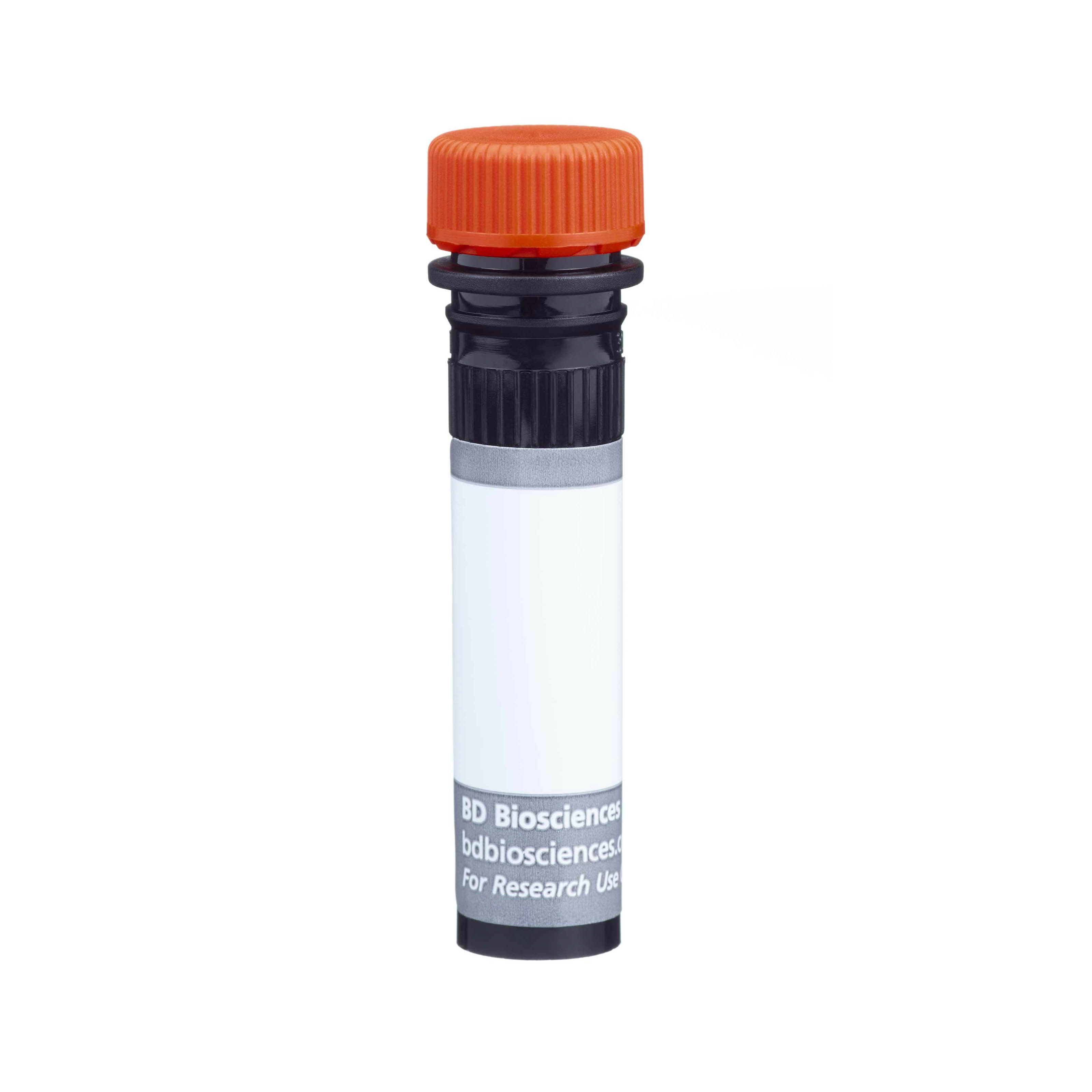 全部商品分类
全部商品分类

品牌: BD Pharmingen
 下载产品说明书
下载产品说明书 用小程序,查商品更便捷
用小程序,查商品更便捷


 收藏
收藏
 对比
对比 咨询
咨询反应种属:
Human (Tested in Development)
来源宿主:
Mouse BALB/c IgG1, κ
产品介绍
产品介绍
产品信息
荧光素标记
抗原名称
ASGPR1

宿主
Mouse BALB/c IgG1, κ

免疫原
Rat Liver membrane constituents

简单描述
The 8D7 monoclonal antibody recognizes Asialoglycoprotein receptor 1 (ASGPR 1), also known as Hepatic lectin H1 (HL-1). ASGPR 1 is an approximately 42 kDA type II integral membrane protein that is expressed on the surface of hepatic cells. It is expressed by hepatocytes on the sinusoidal-lateral plasma membrane but not on the bile canalicular membrane. ASGPR 1 plays a role in serum glycoprotein homeostasis. It functions as a subunit of the Asialoglycoprotein receptor (ASGPR) complex that binds, internalizes, and transports various glycoproteins for lysosomal degradation. The receptor may also promote hepatic infection by the binding and uptake of various viruses. The immunogen used to generate the 8D7 hybridoma was rat liver membrane extracts. Rat ASGPR consists of three polypeptide subunits (Rat hepatic lectin 1-3 (RHL1-3). The 8D7 antibody has been shown to react with a subunit-specific epitope on RHL-1. Clone 8D7 cross-reacts with human ASGPR 1.
The antibody was conjugated to BD Horizon BUV615 which is part of the BD Horizon Brilliant™ Ultraviolet family of dyes. This dye is a tandem fluorochrome with an Ex Max near 350 nm and an Em Max near 615 nm. BD Horizon Brilliant BUV615 can be excited by the ultraviolet laser (355 nm) and detected with a 610/20 filter and a 595 nm LP. Due to the excitation of the acceptor dye by the blue/yellow-green laser line, there may be significant spillover into channels detecting PE-CF594 like emissions (eg, 610/20-nm filter).

商品描述
8D7
The 8D7 monoclonal antibody recognizes Asialoglycoprotein receptor 1 (ASGPR 1), also known as Hepatic lectin H1 (HL-1). ASGPR 1 is an approximately 42 kDA type II integral membrane protein that is expressed on the surface of hepatic cells. It is expressed by hepatocytes on the sinusoidal-lateral plasma membrane but not on the bile canalicular membrane. ASGPR 1 plays a role in serum glycoprotein homeostasis. It functions as a subunit of the Asialoglycoprotein receptor (ASGPR) complex that binds, internalizes, and transports various glycoproteins for lysosomal degradation. The receptor may also promote hepatic infection by the binding and uptake of various viruses. The immunogen used to generate the 8D7 hybridoma was rat liver membrane extracts. Rat ASGPR consists of three polypeptide subunits (Rat hepatic lectin 1-3 (RHL1-3). The 8D7 antibody has been shown to react with a subunit-specific epitope on RHL-1. Clone 8D7 cross-reacts with human ASGPR 1.
The antibody was conjugated to BD Horizon BUV615 which is part of the BD Horizon Brilliant™ Ultraviolet family of dyes. This dye is a tandem fluorochrome with an Ex Max near 350 nm and an Em Max near 615 nm. BD Horizon Brilliant BUV615 can be excited by the ultraviolet laser (355 nm) and detected with a 610/20 filter and a 595 nm LP. Due to the excitation of the acceptor dye by the blue/yellow-green laser line, there may be significant spillover into channels detecting PE-CF594 like emissions (eg, 610/20-nm filter).

同种型
Mouse BALB/c IgG1, κ

克隆号
克隆 8D7 (RUO)

浓度
0.2 mg/ml

产品详情
BUV615
The BD Horizon Brilliant™ Ultraviolet 615 (BUV615) Dye is part of the BD Horizon Brilliant™ Ultraviolet family of dyes. This tandem fluorochrome is comprised of a BUV395 donor with an excitation maximum (Ex Max) of 350-nm and an acceptor dye with an emission maximum (Em Max) at 615-nm. BUV615, driven by BD innovation, is designed to be excited by the ultraviolet laser (355 nm) and detected using an optical filter centered near 615-nm (e.g, 610/20 bandpass filter). The acceptor dye can be excited by the Blue (488-nm) and yellow-green (561-nm) lasers resulting in cross-laser excitation and fluorescence spillover. Please ensure that your instrument’s configurations (lasers and optical filters) are appropriate for this dye.

BUV615
Ultraviolet 355 nm
350 nm
615 nm
应用
实验应用
Flow cytometry (Qualified)

反应种属
Human (Tested in Development)

目标/特异性
ASGPR 1

背景
别名
Asialoglycoprotein receptor 1, ASGR1, ASGP-R1, ASGPR 1, HL-1, CLEC4H1

制备和贮存
存储溶液
Aqueous buffered solution containing ≤0.09% sodium azide.

保存方式
Aqueous buffered solution containing ≤0.09% sodium azide.
文献
文献
研发参考(3)
1. Mizuno M, Yamada G, Nagashima H. Development of a monoclonal antibody identifying an antigen which is segregated to the sinusoidal and lateral plasma membranes of rat hepatocytes. J Gastroenterol. 1986; 21(3):238-244. (Immunogen: Electron microscopy, Immunohistochemistry).
2. Shimada M, Mizuno M, Uesu T, et al. A monoclonal antibody to rat asialoglycoprotein receptor that recognizes an epitope specific to its major subunit. Hepatol Res. 2003; 26(1):55-60. (Clone-specific: Flow cytometry, Immunofluorescence, Immunohistochemistry, Western blot).
3. Touboul T, Hannan NR, Corbineau S, et al. Generation of functional hepatocytes from human embryonic stem cells under chemically defined conditions that recapitulate liver development. Hepatology. 2010; 51(5):1754-1765. (Biology).

声明 :本官网所有报价均为常温或者蓝冰运输价格,如有产品需要干冰运输,需另外加收干冰运输费。





